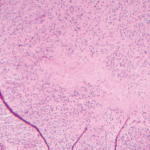Additionally, significant abnormalities exist in a number of T cells in patients with CVID, so much so that some experts believe it is a disease of T cells or that CVID’s B cell defects are a product of T cell deficiency.
“These patients are at much greater risk of defects in adaptive immunity. Interestingly, you cannot have an abnormality in an adaptive response without a corresponding defect in innate immunity. They move together,” said Dr. Gershwin. “Most [primary immune deficiencies] are those of adaptive immunity. The minority are of innate immunity. The reason for that may be that defects of innate immunity may be a fatal disease, and there may even be loss in utero.”
The most common autoimmune diseases associated with CVID are hematologic, although the reason is unclear, he noted. In both men and women with CVID, survival is significantly reduced due to any one of multiple complications, such as lymphoma, hepatitis, structural or functional lung impairment or gastrointestinal disease with or without malabsorption. However, in studies of CVID, autoimmunity was not associated with mortality.
Treatment
Dr. Gershwin compared developing CVID therapies with plugging a leak in a dike: Plug one leak and other leaks may emerge as a result.
“The immune system is very smart. As we know from lupus and the failure of multiple drugs that seemed to have worked in mice; as soon as you put them in a human, you block the pathway you intended to block, but the promiscuous autoimmune response finds another way around that. Then you wind up with autoimmunity through a different route,” he said. Physicians must educate patients so they can quickly seek care for high fevers and other signs of serious infection.
About 80% of patients with CVID have defects in multiple genes, and the long list of culprits includes NFKB1, TNFRSF7 (CD27), PIK3R1 and CD19. As the cost of gene sequencing comes down, physicians may be able to detect these defects quickly and early in life. Dr. Gershwin said, “I believe that there will come a time in America that when a child is born, they’ll get a social security number and also an email address, a cell phone number, and get their DNA sequenced.”
In a small number of CVID patients who survived bone marrow or stem cell transplantation, 50% were cured of their immunodeficiencies, while the other half still had various forms of immunodeficiency, said Dr. Gershwin. This finding suggests contributing factors to CVID’s origin may lie outside the hematopoietic system.

